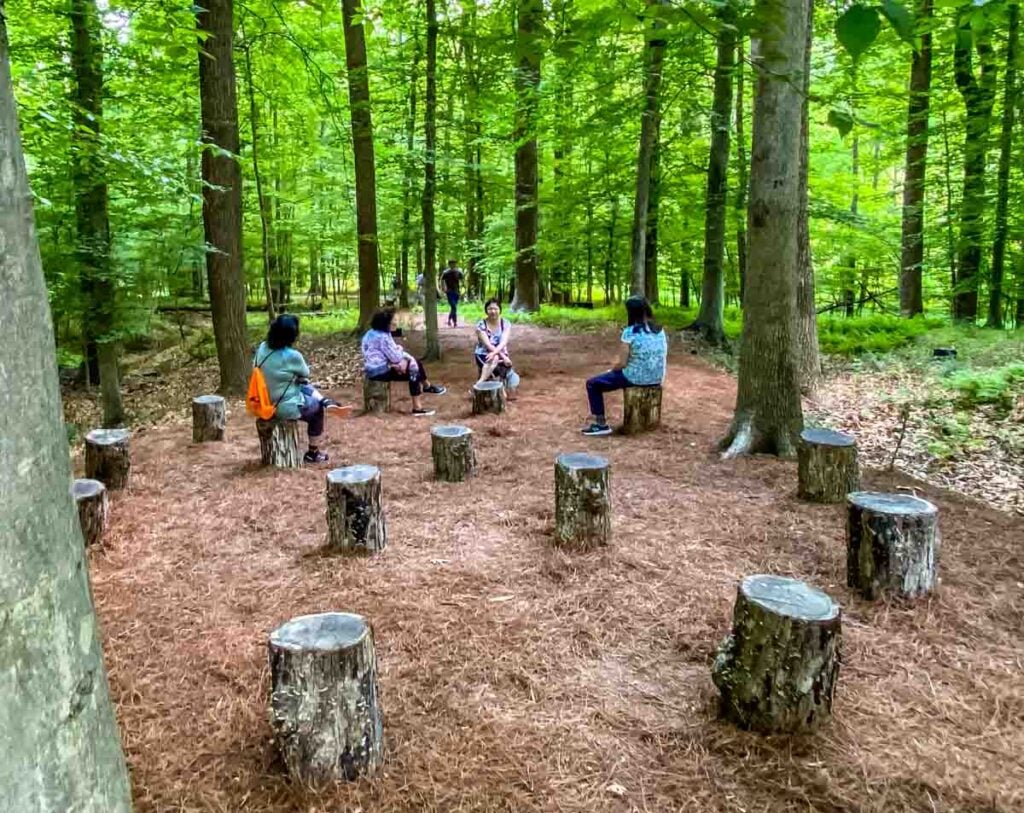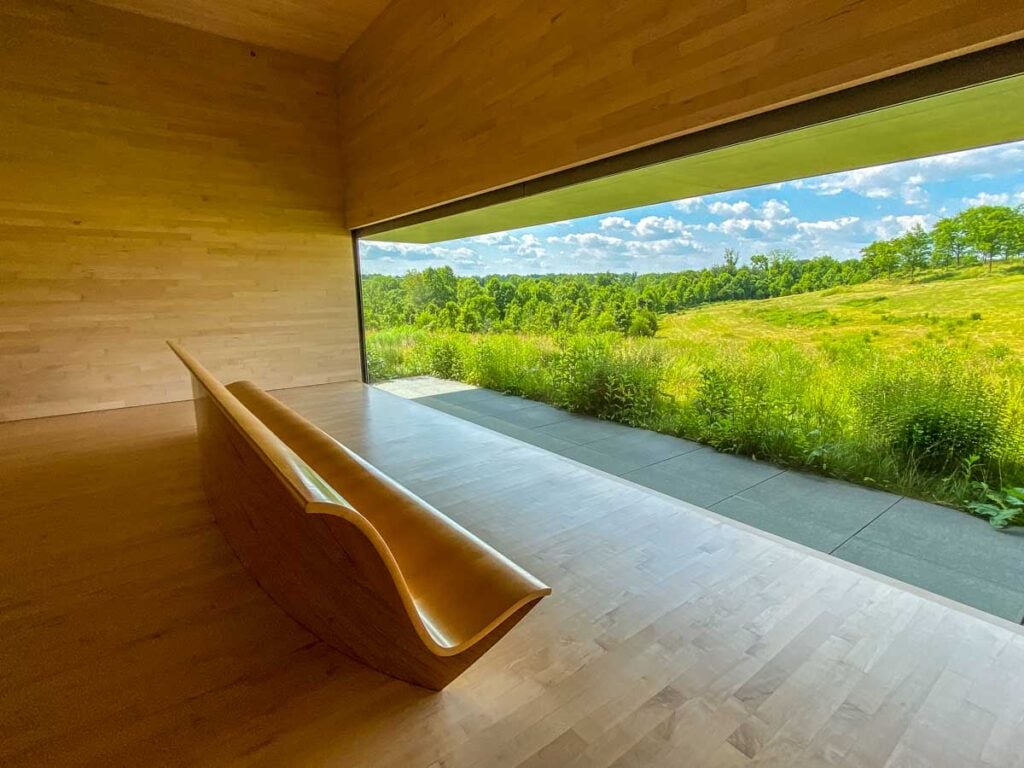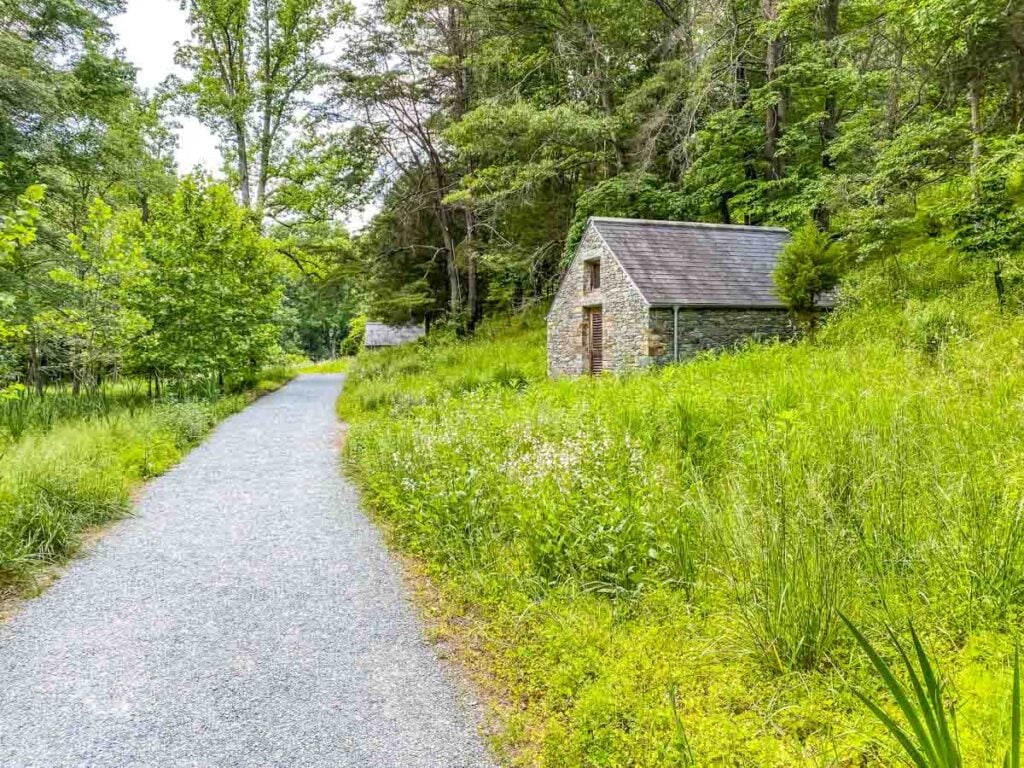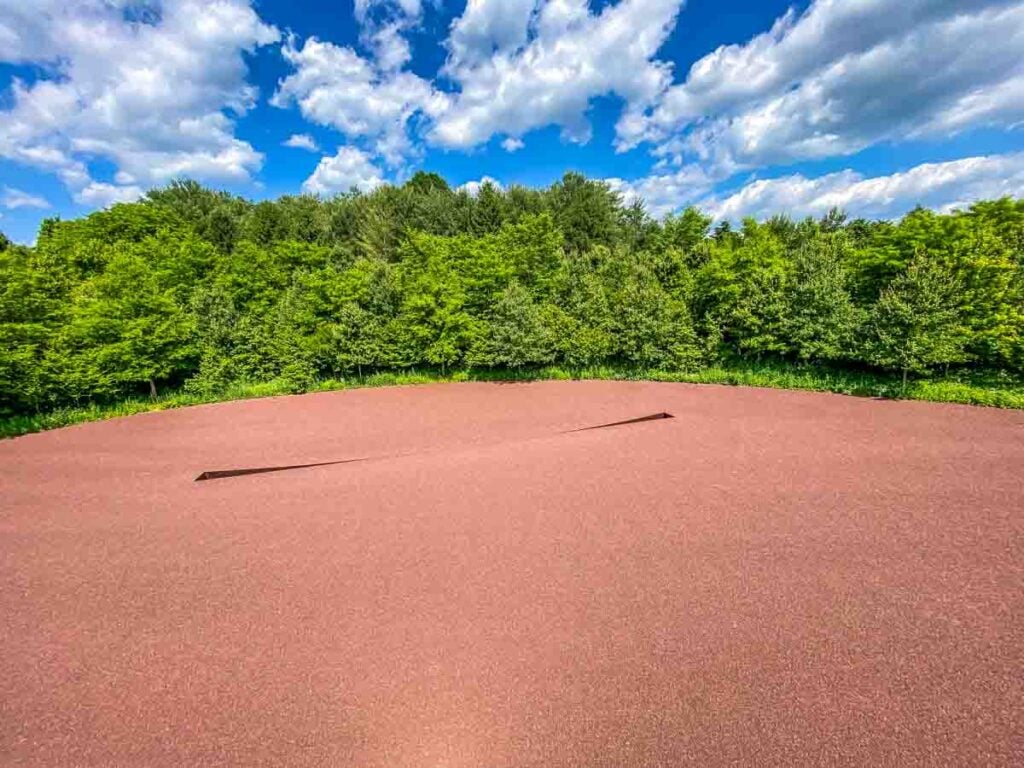Nestled in the serene landscape of Potomac, Maryland, Glenstone Museum stands as a testament to the harmonious blend of art, architecture, and nature. With its diverse collection of artworks, breathtaking wildflower trails, and seamless integration with the surrounding environment, this hidden gem invites visitors to experience a unique fusion of human creativity and the beauty of the natural world.
What to Know Before You Go
Located in Potomac, Maryland, Glenstone Museum is conveniently situated just outside Washington, D.C. The museum spans over 230 acres of picturesque landscape, offering a tranquil escape from bustling city life. Its location provides easy access for both local residents and travelers seeking a peaceful retreat immersed in art and nature.

Reservations, Parking, Hours and More
To ensure an intimate experience, Glenstone Museum operates on a reservation-based system. Visitors are encouraged to book their tickets well in advance, allowing a limited number of guests at any given time. This approach ensures each visitor has ample space and time to appreciate the art and natural surroundings without feeling rushed.

The Museum and its grounds are open Thursday to Sunday, 10am to 5pm and admission is free. The trails close at 5pm and the last admission occurs at 4:15pm. You will want to wear comfortable walking shoes and give yourself at least 2 to 3 hours to enjoy the experience.

All visitors must be 12 years of age or older, and those between the ages of 12 and 17 need to be accompanied by an adult owing to the nature of the fragile works on view.
There are 3 parking lots or ‘groves’, and the one directly in front of the Arrival Hall offers accessible spaces. Complimentary wheelchairs and gallery chairs are available, and a cart service runs continuously through the day between the Arrival Hall and a bench between the Gallery and Pavillions.

Glenstone requests that visitors kindly stay on the marked paths and trails and it is easy to see why you arrive. The landscape is as much a part of the museum as the artworks upon on it. For this reason, it’s not surprising that picnicking is not allowed on the grounds.

There are, however, 2 cafes on site. One offers indoor dining and the other an indoor/outdoor option. Dining services are on a first come, first served basis and a seasonal menu is offered from 10:30am to 4pm each day.
Featured Artists and Architects
Glenstone Museum showcases an impressive collection of contemporary artworks by renowned artists from around the world. The collection includes thought-provoking sculptures, mesmerizing installations, and captivating paintings. Some of the featured artists include Jeff Koons, Andy Goldsworthy, and Richard Serra.

While the Gallery and remarkably constructed Pavilions offer a more traditional art museum experience, the outdoor sculptures are even more appealing. These awe inspiring and often larger-than-life pieces are so well integrated into Glenstone’s grounds it is as if they really are meant to be there.



In addition to its artworks, Glenstone itself, particularly the Pavillions, is a masterpiece of architecture. Designed by architects Thomas Phifer and Partners, the museum seamlessly blends into its natural surroundings. The building’s sleek lines, expansive glass walls, and carefully placed openings allow for an immersive experience that bridges the gap between the indoor and outdoor spaces.

From the inside, the large windows frame the surrounding landscape like living paintings, while from the outside, the building seamlessly integrates into the environment, appearing as its own natural work of art.

The Pavillions offer 11 rooms to showcase artwork installations. Each room is unique in its proportions, and all are connected by a glass enclosed passageway that overlooks a massively breathtaking water court full of seasonally changing plant life.

The Pavillions is also LEED certified gold, meaning that it well exceeds certain environmental criteria and is energy efficient in its design. It avoids excessive water usage, is constructed from responsibly sourced materials, and is well integrated into the surrounding ecosystem, taking the appropriate steps to preserve local wildlife and biodiversity.

A Marriage of Art and Nature
What sets Glenstone Museum apart is its unique ability to seamlessly integrate art and nature. The carefully curated artworks are strategically placed throughout the grounds, creating a dialogue with the surrounding landscape. Further, the minimalistic approach to exhibition design allows the artworks to blend into the natural environment, encouraging visitors to contemplate the relationship between human creativity and the beauty of the natural world.

This minimalistic approach even extends to the artworks’ plaques. Instead of overwhelming visitors with excessive information, the curators at Glenstone opt for concise descriptions, allowing the art to speak for itself. This intentional choice encourages a deeper connection with the art, allowing visitors to form their interpretations and engage in a more personal and contemplative experience.

Exploring the Wildflower Trails
One of the highlights of a visit to Glenstone Museum is the opportunity to explore the beautiful wildflower trails that meander through the grounds. As you stroll along these paths, you’ll encounter a vibrant array of native plants, including a variety of wildflowers in full bloom. The curated trails not only offer a feast for the eyes but also provide a sensory experience, immersing visitors in the sights, scents, and sounds of nature.


Wildlife and Bird Watching
Glenstone’s commitment to preserving and nurturing the environment extends beyond the artworks and wildflowers. The vast grounds are home to a diverse array of wildlife, including various bird species. Nature enthusiasts and birdwatchers will find delight in observing all of these in their natural habitat, further enhancing the overall experience.

Conclusion
Glenstone Museum is a hidden oasis where art and nature coexist harmoniously. From its breathtaking wildflower trails to its seamless architectural integration, the museum invites visitors to immerse themselves in the beauty of the natural world while appreciating thought-provoking contemporary artworks.

Whether you’re an art enthusiast, nature lover, or simply seeking a tranquil escape, Glenstone Museum offers a captivating experience that blurs the boundaries between the human creative spirit and the wonders of the great outdoors.
you may also like:








